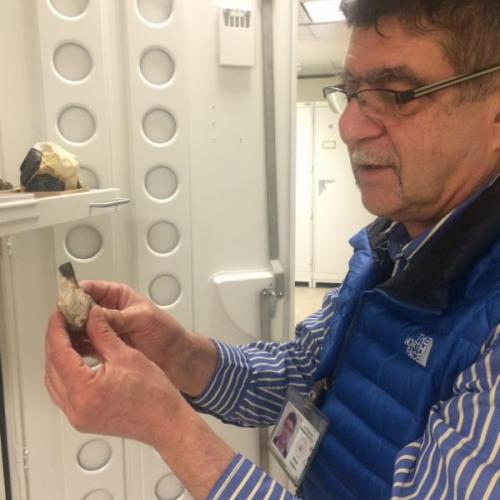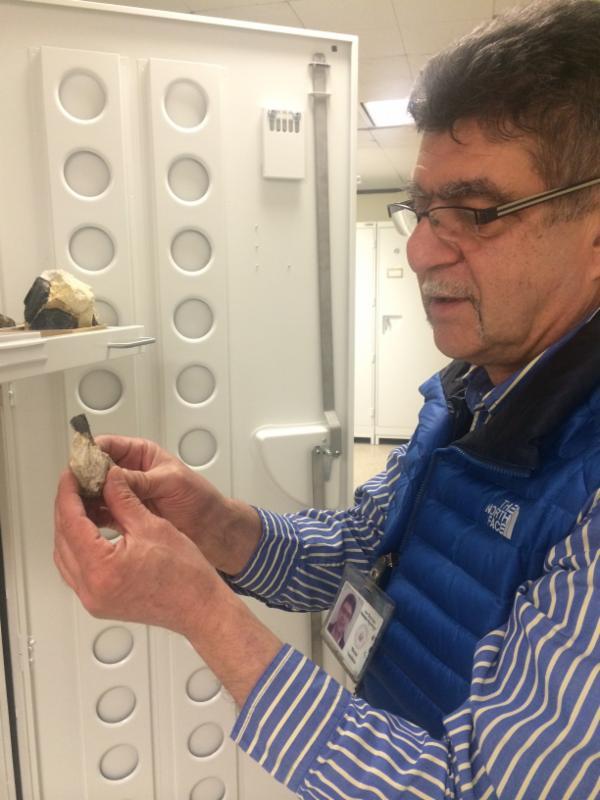
Behind the Scenes in the Mineralogy Collection

From rocks to gems to minerals, there are thousands of specimens in the Museum's mineralogy collection. "Every mineral can tell you a story," says Dr. Marian Lupulescu, curator of geology at the State Museum.
Many New York pegmatite rock minerals (igneous rocks with large crystals) are internationally renowned and found in every major mineral collection in the world. However, not much is known about their geologic history, particularly their age and origin.
Rocks are typically dated by measuring the ratio of uranium and lead isotopes in the tiny but common mineral called zircon. In an attempt to learn more about a specific pegmatite rock's history, Dr. Lupulescu started a project last year to learn about the rock's age. The rock lacked zircon, so Dr. Lupulescu's project focused on dating the rock using a different method.
The rock was from Bedford, NY and contained a specific mineral called columbite. Dr. Lupulescu worked with scientists from St. Lawrence University and University of Arizona to conduct a different way to date the rock using a unique laser ablation process on the columbite mineral found in the rock. This attempt provided an age for the rock: 371.7 million years!
Dr. Lupulescu was impressed by the results and is considering using the same method to date other rocks in the collection and to propose the columbite from Bedford as a standard for dating rocks that lack zircon but contain columbite.
With thousands of gems, minerals, and rocks in the State Museum's collections, there are many stories to be told. Don't forget to visit the Minerals of New York exhibition during your next trip to the Museum!


